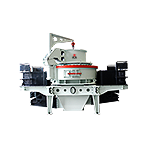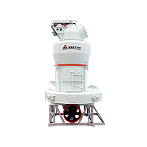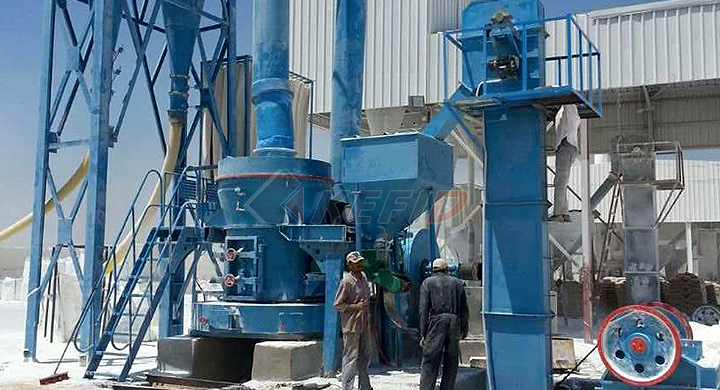магазин
screening of antimicrobial substance of plants
KEFID,Дробильно-сортировочное оборудование Китая высокого качества, стандартное дробильное оборудование. На протяжении более 30 лет мы занимаемся исследованиями и разработками и производством дробильного оборудования, дробления зданий, промышленных дробилок и экологически чистых строительных материалов, и предлагаем профессиональные решения и дополнительные продукты для создания ценность для клиентов.
Онлайн сообщение
screening of antimicrobial substance of plants

Plant Products as Antimicrobial Agents
Initial screening of potential antibacterial and antifungal compounds from plants may be performed with pure substances (2, 23, 117) or crude extracts (73, 203, 182) The methods used for the two types of organisms are similarContext: In many regions of Indonesia, there are numerous traditional herbal preparations for treatment of infectious diseases However, their antimicrobial potential has been poorly studied by modern laboratory methods Objective: This study investigates in vitro antimicrobial activity of 49 ethanol extracts from 37 plant species used in Indonesian traditional medicine for treatment againstScreening of in Vitro Antimicrobial Activity of Plants

Preliminary Screening of Antibacterial Activity Using
Disc diffusion methods are extensively used to investigate the antibacterial activities of natural antimicrobial substances and plant extracts These assays are based on the use of discs as reservoirs containing the solution of substances to be examined (Bartner et al 1994)Apr 01, 2016· 1 Introduction Antimicrobial susceptibility testing can be used for drug discovery, epidemiology and prediction of therapeutic outcome In this review, we focused on the use of antimicrobial testing methods for the in vitro investigation of extracts and pure drugs as potential antimicrobial agents After the revolution in the “golden era”, when almost all groups of importantMethods for in vitro evaluating antimicrobial activity: A

Screening of antimicrobial activity of mangrove plant
Phytochemical screening indicates the presence of flavonoids and terpenes [4, 5] The flavonoids present in the plant were found to have hepatoprotective and antioxidant activities [6] The present study deals with the antimicrobial activity of different organic solvent extractsThis has necessitated a search for a new source of antimicrobial substances such as plants as they produce a variety of bioactive compounds of known therapeutic properties This study has been conducted to evaluate the antimicrobial activity of different medicinal plant extracts against human pathogens including two reference strains [2, 9, 18]In Vitro Antimicrobial Activity of Some Medicinal Plants

Screening for antimicrobial activity of ten medicinal
Feb 17, 2006· Conclusion This in vitro study corroborated the antimicrobial activity of the selected plants used in folkloric medicineAll these plants were effective against three or more of the pathogenic microorganisms However, they were ineffective against Streptococcus β hemolytic and Pseudomonas aeruginosaTheir medicinal use in infections associated with these two species is not recommendedJun 30, 2020· Screening of the antimicrobial activity of some extracts of edible wild plants in Moroccopdf Functional Foods in Health and Disease 2020; 6(10): 2 65 (PDF) Screening of the antimicrobial activity of some

(PDF) Screening of antibacterial activity of medicinal plants
The results indicated that all medicinal plants have effective antibacterial activities and should be a new source of antibiotics Further work is needed to isolate the active antimicrobial agentsPhytochemical screening indicates the presence of flavonoids and terpenes [4, 5] The flavonoids present in the plant were found to have hepatoprotective and antioxidant activities [6] The present study deals with the antimicrobial activity of different organic solvent extractsScreening of antimicrobial activity of mangrove plant

Screening of in vitro antimicrobial activity of plants
Screening of in vitro antimicrobial activity of plants used in traditional Indonesian medicine Romulo A(1), Zuhud EAM(2), Rondevaldova J(1), Kokoska L(1) Author information: (1)a Department of Crop Sciences and Agroforestry, Faculty of Tropical AgriSciences , Czech University of Life Sciences Prague , Prague , Czech RepublicFeb 01, 2018· Moreover, antimicrobial activity of different natural substances such as medicinal plant extract have been investigated against food borne bacteria For example; Ahmad and Beg, 2001 , Kokoska et al, 2002 , Ateb and ErdoUrul, 2003 , Rios and Recio, 2005 tested the suppression of food borne bacteria and their diseases by medical plant extractsAntimicrobial activity of some plant extracts against

SCREENING METHODS IN THE STUDY OF ANTIMICROBIAL
3 Screening Methods in the Study of Antimicrobial Properties of Medicinal Plants deposited into well cut into the agar and can be used with large number of extracts and/or large number of bacterial isolates (Dorman and Deans, 2000)Aqueous extracts of different parts of the plant (leaf, stem, bark, bulb, fruit and root) reported to have medicinal properties were tested for their antimicrobial activity against gram positive(PDF) Phytochemical screening and antimicrobial assay of

Plant Products as Antimicrobial Agents
ual plantderived medications can be found in the first edition of the Physician’s Desk Reference for Herbal Medicines, published by Medical Economics Company in 1998 MAJOR GROUPS OF ANTIMICROBIAL COMPOUNDS FROM PLANTS Plants have an almost limitless ability to synthesize aromatic substances, most of which are phenols or their oxygensubsti1 The freezedried powders, methanol extracts and the marcs of various parts of 57 ornamental plants were tested againstStaphylococcus aureus, Escherichia coli, Proteus vulgaris andPseudomonas aeruginosa using the tube dilution and plate diffusion methods 2 Nineteen plants showed activity against at least one of the test organisms These plants were:Aphelandra squarrosa cvThe antibacterial screening of some common ornamental plants

Screening of Antimicrobial Potential of Barleria prionitis
Plants are the backbone of all life on the earth and a necessary resource for human wellbeing as raw medicine, food and fuel Traditional plant derived medicines have been used in most parts of the world and their use in combating microbial disease is becoming the focus of several studies (Bhavnani and Ballow, 2000; Chariandy et al, 1999) Plant derived substances have recently become ofThese substances may be useful not only as biocontrol agents against plant diseases but also in other industrial fields This is the first study to demonstrate various kinds of antimicrobial substances from a large number of entomopathogenic fungi This study suggests that novel antimicrobial substances could be isolated from entomopathogenicScreening and characterization of antimicrobial substances

Screening of plant extracts for antimicrobial activity
Screening of plant extracts for antimicrobial activity against bacteria and yeasts with dermatological relevance the following characteristic plant substances were tested: usnic acid, carnosol, carnosic acid, ursolic acid, oleanolic acid, harpagoside, boswellic acid and gentiopicroside Antimicrobial plantantimicrobial activity and phytochemical screening of three selected medicinal plants used to treat bacterial and fungal infections in kenya by catherine k kitonde second class honours (lower division), bsc microbiology and biotechnology, university of nairobi aAntimicrobial Activity And Phytochemical Screening Of

Screening of antimicrobial activity of mangrove plant
Phytochemical screening indicates the presence of flavonoids and terpenes [4, 5] The flavonoids present in the plant were found to have hepatoprotective and antioxidant activities [6] The present study deals with the antimicrobial activity of different organic solvent extractsAqueous extracts of different parts of the plant (leaf, stem, bark, bulb, fruit and root) reported to have medicinal properties were tested for their antimicrobial activity against gram positive(PDF) Phytochemical screening and antimicrobial assay of

Screening of plant extracts for antimicrobial activity
Screening of plant extracts for antimicrobial activity against bacteria and yeasts with dermatological relevance the following characteristic plant substances were tested: usnic acid, carnosol, carnosic acid, ursolic acid, oleanolic acid, harpagoside, boswellic acid and gentiopicroside Antimicrobial plantPlants are the backbone of all life on the earth and a necessary resource for human wellbeing as raw medicine, food and fuel Traditional plant derived medicines have been used in most parts of the world and their use in combating microbial disease is becoming the focus of several studies (Bhavnani and Ballow, 2000; Chariandy et al, 1999) Plant derived substances have recently become ofScreening of Antimicrobial Potential of Barleria prionitis

Research Article Screening of Antimicrobial Potential of
Plants used in the traditional medicine contain a vast array of active substances that can be used to treat many human diseases [6]Plant extracts have been proposed to be used as antimicrobial substances [7] To determine the potentialAug 29, 2018· The development of Resistance of antimicrobial agent has forced scientist to search for anti microbial substance from alternative source such as medicinal plants (Blumenthal, 2009) In addition, certain antibiotics present undesirable side effects such as nausea, depression of bone marrow, thrombocytopenic purpura and a granulocytosis leadingPhytochemical and Antimicrobial Screening of Ethanol and

(PDF) Antimicrobial Potentialities of Mangrove Plant
to screen antimicrobial leaf, stem, bark, fruit, pulp, a secretory substance like latex and in vitro raised calli) were stated in literat complete plants were used in the green synthesis ofJul 01, 1988· In some cases the diffusion techniques can be used for antimicrobial screening but they can never be used as a definitive method The diffusion methods are wellsuited for preliminary screening of pure substances (alkaloids, flavanoids, terpenoids, etc)Screening methods for natural products with antimicrobial

The antibacterial screening of some common ornamental plants
1 The freezedried powders, methanol extracts and the marcs of various parts of 57 ornamental plants were tested againstStaphylococcus aureus, Escherichia coli, Proteus vulgaris andPseudomonas aeruginosa using the tube dilution and plate diffusion methods 2 Nineteen plants showed activity against at least one of the test organisms These plants were:Aphelandra squarrosa cvplants/pests/diseases Antimicrobial screening of plant extracts and phytochemicals, then, represents a starting point for antimicrobial drug discovery Phytochemical studies have attracted the attention of plant scientists due to the development of new and sophisticated techniques TheseAntimicrobial Activity of Medicinal Plant Extracts and

Screening of some plants from Northern Argentina for their
discovery of new antimicrobial compounds, due to an alarming increase in the rate of infections with antibioticresistant microorganisms (Davies 1994) One of the routine approaches for the search of biologically active substances is the systematic screening of microorganisms or plants, which have been sources of many useful therapeutic agentsInitial screening of potential antibacterial and antifungal compounds from plants may be performed with pure substances (2, 23, 117) or crude extracts (73, 203, 182) The methods used for the two types of organisms are similarPlant Products as Antimicrobial Agents | Clinical

Phytochemical and antimicrobial screening of constituents
Asian Journal of Plant Science and Research, 2013, 3(4):17 ISSN : 22497412 CODEN (USA): AJPSKY 1 Pelagia Research Library Phytochemical and antimicrobial screening of constituents of some medicinal plants *Salihu L and Ado K Department of Chemistry, NigerianFeb 17, 2006· The antimicrobial activity and Minimal Inhibitory Concentration (MIC) of the extracts of Bidens pilosa L, Bixa orellana L, Cecropia peltata L, Cinchona officinalis L, Gliricidia sepium HB & K, Jacaranda mimosifolia DDon, Justicia secunda Vahl, Piper pulchrum CDC, P paniculata L and Spilanthes americana Hieron were evaluated against five bacteria (Staphylococcus aureus,Screening for antimicrobial activity of ten medicinal








